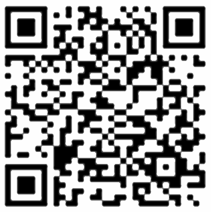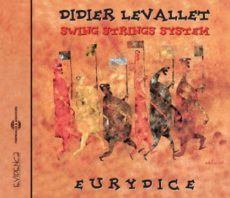
Daily Dose Of Jazz…
Didier Levallet was born in Arcy-sur-Cure, France on July 19, 1944 and is a self-taught bassist. He made his professional debut in Paris in 1969 working with the likes of Ted Curson, Johnny Griffin, Kenny Clarke, Mal Waldron, Hank Mobley, Steve Lacy, Harry Beckett and Didier Lockwood.
Didier worked with the free-jazz quartet Perception through the 70s and toured the United States with tenor saxophonist Byard Lancaster from 1974 to 1976. He also led Confluence, a group based on strings and percussion only. By the early Eighties he was playing with Frank Lowe, Archie Shepp, Mike Westbrook’s Concert Band and Chris McGregor’s Brotherhood Of Breath as well as the Double Quartet with Tony Oxley.
Levallet is a prolific composer who combines free-improvisation and structure coherently. He works within four bands – the Quintet, a 12-piece band, Swing Strings System with seven string players plus drums and a trio with violinist Dominique Pifarely and guitarist Gérard Marais. In 1976, he founded ADMI, the Association pour la Developement de la Musique Improvise.
He was a former Director of the French National Jazz Orchestra from 1997 to 2000 and serves as an educator at the L’École Nationale de Musique in Angoulême. Double bassist, composer, arranger and leader Didier Levallet regularly hold workshops and music concerts in Cluny, France.
![]()
More Posts: bass
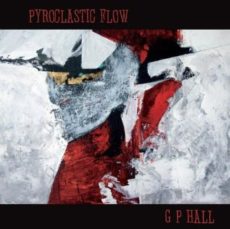
Daily Dose Of Jazz…
Graham Peter Hall, generally known as GP Hall, was born on July 15, 1943, and raised in Hampton Hill, London, United Kingdom, where he was schooled in classical, flamenco and jazz. As a teenager he went on to play in the Odd Lot Band and set up the Odd Lot Club as a venue for their music, which in turn attracted more established bands and players for concerts.
As he became better known, Hall went on to play at more celebrated London venues including The Roundhouse, the Middle Earth club and a residency at the 100 Club. He would back Deep Purple, The Hollies, Chris Farlowe and played with John Lee Hooker, Sonny Boy Williamson and with Casey Jones & The Governors.
His musical approach broadened in the early 1970s where he spent time studying with Romani musicians and flamenco guitarist Manitas de Plata, became involved in more avant-garde work, writing, producing and performing, and became the musical director for the multi-media performance art group Welfare State International.
By 1972 GP composed and recorded The Estates on Prototype Records, followed three years later by his sophomore project Manifestations. But around this time, his promising career fell into a fifteen-year depression due to personal trauma. It was until the Eighties that he re-emerged into the music world with his twenty-nine track Colors (Movements) a series of instrumental albums on the Kenwest label. The 90s saw the release of a solo album Imaginary Seasons on his own Imaginary Music label that was nominated for the Mercury Music Prize, followed by Figments Of Imagination in 1996 and an appearance on the Unknown Public compilation alongside guitarists Bill Frisell, Frank Zappa, John Zorn and Robert Fripp.
Into the new millennium the guitarist has continued to record new and old music combining them with live performances, created eclectic instrumental and industrial inclined works, recorded several unreleased albums and collaborated with percussionist Justin Ash, painter Alistair Michie, Lol Coxhill, Paul Rutherford, Jeff Clyne, John Ellis and Lyn Dobson, among others.
Hall invented the musical genre known as Industrial Sound Sculptures, draws on classical, rock, jazz, flamenco, folk and blues styles and performs mainly in the free jazz and avant-garde genres, though much more melodic. He uses a variety of techniques such as slides, fingerpicking and found implements like crocodile clips, palette knives, velcro strips, an antique psaltery bow and wind-up toy to create a variety of different sounds.
Guitarist GP Hall is adept with electric and electronic playing but is also known for his particular virtuosity as an acoustic guitarist, an expert flamenco guitarist, and an accomplished classical-style player. He also plays a customized Shergold six-string bass guitar featuring a half-fretted, half-fretless fretboard and has been known to dabble in playing other instruments such as double bass, piano, soprano saxophone and varied percussion, and vocals as he continues his musical journey.
![]()
More Posts: guitar
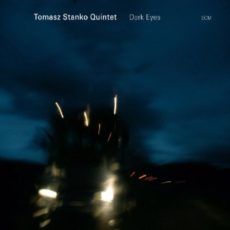
Daily Dose Of Jazz…
Tomasz Stańko was born on July 11, 1942 Rzeszów, Poland and his first encounters with jazz were through Voice of America radio programs and U.S. State Department tours. Coming of age in Communist Poland he was impressed by the correlation jazz had with a message of freedom. In 1958 he saw his first jazz concert given by Dave Brubeck.
Coming to prominence in the early 1960s alongside pianist Adam Makowicz in the Jazz Darings, the group is considered one of the first groups to play free jazz in Europe. Stańko later collaborated on pianist Krzysztof Komeda’s pivotal 1966 album Astigmatic, then formed at quintet in 1968 with Zbigniew Seifert on violin and alto saxophone and in 1975 he formed the Tomasz Stańko-Adam Makowicz Unit.
Tomasz has since established himself as a leading figure not only in Polish jazz, but on the world stage working with Jack DeJohnette, Dave Holland, Reggie Workman, Rufus Reid, Lester Bowie, David Murray, Manu Katche, Taj Mahal, Chico Freeman, Howard Johnson, Don Cherry Arild Andersen, Jon Christensen, Bobo Stenson, Tony Oxley, Anders Jormin, was a member of Cecil Taylor’s big band and the Globe Unity Orchestra.
Losing his natural teeth in the 1990s, over time he developed a new embouchure with the help of a skilled dentist and monotonous practice. Trumpeter, composer and improviser Tomasz Stanko, who concentrates in the free jazz and avant-garde genres, continues to record for ECM Records, perform and tour globally.
![]()
More Posts: trumpet
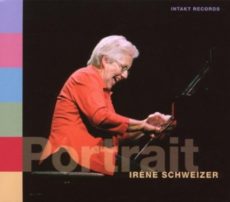
Daily Dose Of Jazz…
Irène Schweizer was born on June 2, 1941 in Schaffhausen, Switzerland. She studied piano and immersed herself in the free improvisation genre but is adept at playing various jazz styles.
She has performed and recorded numerous solo piano performances as well as performing as part of the Feminist Improvising Group with Lindsay Cooper, maggie Nichols, Georgie Born, and Sally Potter. Schweizer has played a series of duets with drummers Pierre Favre, Louis Moholo, Andrew Cyrille, Gunter Sommer, Han Bennink and Hamid Drake.
Irène has performed in trio and quartet sessions with John Tchicai, Evan Parker, Peter Kowald and with Yusef Lateef, Uli Trepte and Mani Neumeier at the Montreux Jazz Festival.. One of her most enduring collaborations is with the improvising musician Rudiger Carl.
Pianist Irène Schweizer continues to perform and record in the the free jazz, avant-garde and free improvisation genres.
![]()
More Posts: piano
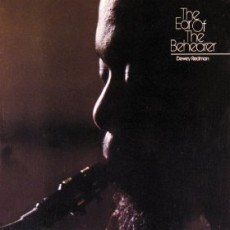
Daily Dose Of Jazz…
Walter Dewey Redman was born May 17, 1931 in Fort Worth, Texas. He attended I.M. Terrell High School and played saxophone in the school band with Ornette Coleman, Prince Lasha and Charles Moffett. After high school he briefly enrolled in the electrical engineering program at Tuskegee Institute in Alabama but became disillusioned with the program and returned home to Texas. In 1953, he earned a bachelor’s degree in Industrial Arts from Prairie View Agricultural and Mechanical University and while attending switched from clarinet to alto saxophone, eventually to tenor.
Following his degree, Redman served for two years in the Army and upon his discharge he began working on a master’s degree in education at the University of North Texas. While there he taught music to fifth graders in Bastrop, Texas and worked as a freelance saxophonist at night and on weekends around Austin, Texas. By 1957 he graduated in Education with a minor in Industrial Arts.
1959 saw him moving to San Francisco, California as result of an early collaboration with clarinetist Donald Rafael Garrett. He would go on to perform with Ornette Coleman, from 1968 to 1972 and recording New York Is Now!, among others. Dewey was also a part of Keith Jarrett’s American Quartet from 1971 – 1976, whose album The Survivors’ Suite was voted Jazz Album of the Year by Melody Maker in 1978.
In the mid-70s Redman formed the quartet Old And New Dreams with Coleman alumni Don Cherry, Charlie Haden and Ed Blackwell. They recorded four albums in the period to 1987. He performed and recorded as an accompanying musician with jazz musicians who performed in varying styles within the post-1950s jazz idiom, including drummer Paul Motian, Pat Metheny, Jane Bunnett, Anthony Cox, Cameron Brown, Billy Hart, Matt Wilson, Roswell Rudd, Randy Weston, Clifford Thornton, Jon Ballantyne, Michael Boclan, David Bond, Leroy Jenkins, Dane Belany and Michel Benita.
As a leader with more than a dozen recordings, Dewey established himself as one of the more prolific tenor players of his generation. Though generally associated with free jazz, he would also play standards and ballads reminiscent of the blues and post-bop mainstream and would sometimes hum into his sax while performing.
Tenor saxophonist Dewey Redman, who occasionally played alto saxophone, the Chinese suona and clarinet mainly in the free jazz genre, passed away from liver failure in Brooklyn, New York, on September 2, 2006. He was the subject of an award-winning documentary film Dewey Time and recorded two albums with his son Joshua.
![]()


